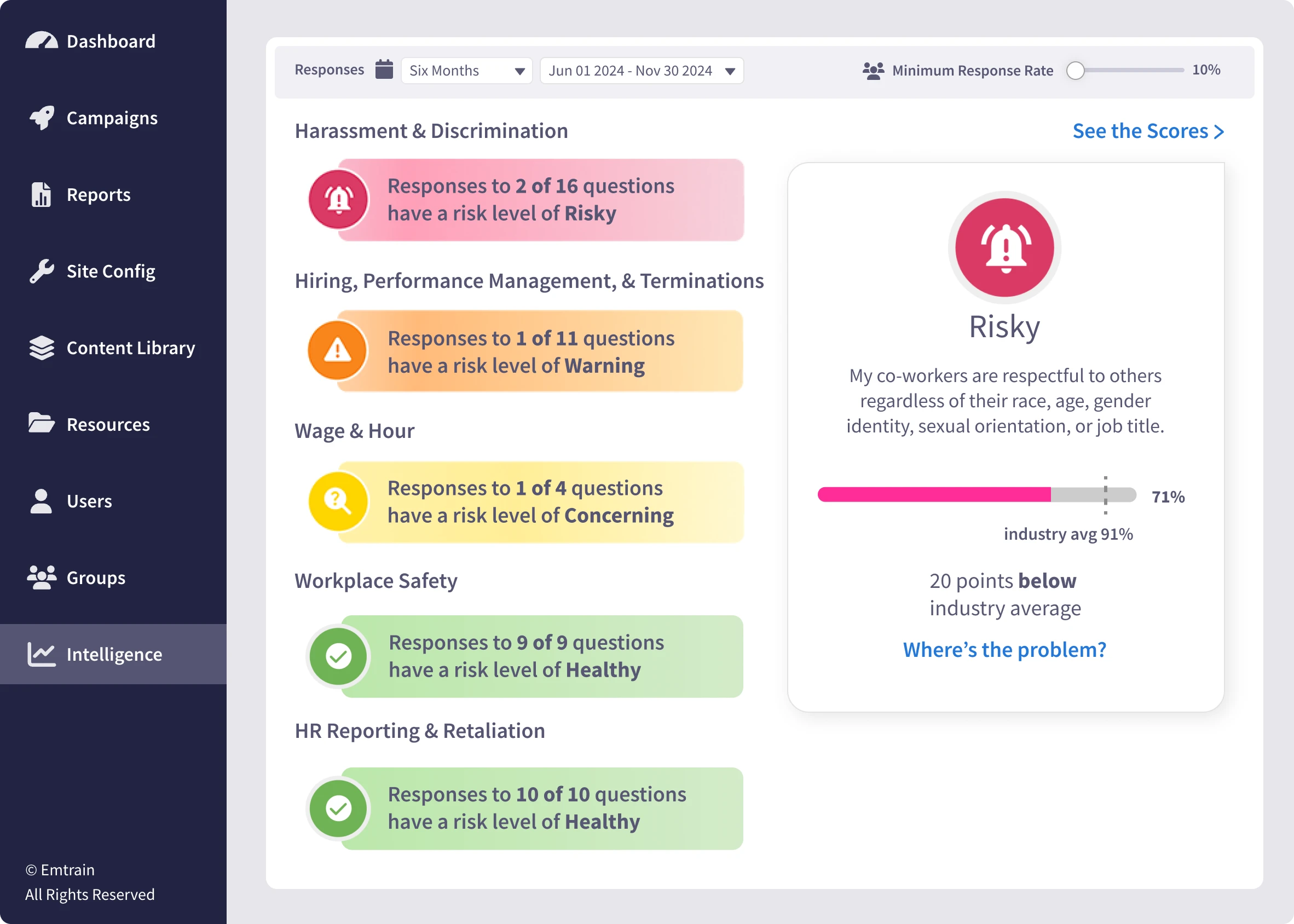Home » Concepts » Privacy & Security » PII (Personal Identifiable Information)
Personally Identifiable Information (PII) refers to any data that can be used to identify an individual, either directly or indirectly. This includes details such as full names, Social Security numbers, email addresses, home addresses, birthdates, financial data, and biometric information. Within a workplace, PII can also encompass employee records, payroll data, and even client or customer information stored in business systems. Protecting PII is not just a regulatory requirement – it’s a cornerstone of ethical business practice and organizational trust.
Emtrain’s harassment training course is engaging, interactive, and designed to spot and reduce EEO risk.

The modern emphasis on protecting personal data originates from the Fair Information Practice Principles (FIPPs) of the 1970s. These principles formed the foundation for data protection laws such as Europe’s General Data Protection Regulation (GDPR), California’s Consumer Privacy Act (CCPA), and global frameworks influencing corporate responsibility today.
With the rise of digital transformation and AI-powered tools, data is everywhere. Organizations handle sensitive information daily – from customer databases to employee communications. As data breaches and cyberattacks rise in frequency and cost, companies that fail to secure PII face not only legal penalties but a loss of employee and customer confidence.
For HR managers, compliance officers, and people leaders, this means ensuring every employee understands how their everyday actions contribute to safeguarding PII.
These types of data are often stored or transmitted through HR platforms, CRM systems, or collaboration tools — and require strong governance to remain secure.
Organizations must approach data protection holistically, combining technology, policy, and behavior. Training programs such as Emtrain’s Global Data Privacy Training empower teams with foundational knowledge about GDPR, CCPA, and other global standards.
Additionally, microlearning modules like Cybersecurity Risks reinforce daily vigilance against phishing, malware, and unsafe data-sharing habits.
Effective protection strategies include:
The cost of data negligence is steep. According to the U.S. Federal Trade Commission (FTC.gov), organizations that mishandle personal data can face regulatory fines, lawsuits, and reputational damage. A 2024 IBM study found that the average cost of a U.S. data breach reached $9.5 million.
Consequences of mishandling PII include:
The National Institute of Standards and Technology (NIST) provides a Privacy Framework that serves as an excellent guide for establishing or improving privacy programs. For HR and compliance teams, aligning policy enforcement with a strong culture of accountability and awareness is key to sustainable data protection.
By investing in proactive training and cultural reinforcement, organizations can transform compliance from a checklist into a strategic advantage.
Protecting Personally Identifiable Information is more than compliance—it’s about preserving trust, integrity, and business resilience. HR leaders, compliance officers, and people managers play a vital role in building a culture that values data stewardship. Every click, upload, and share represents an opportunity to either strengthen or weaken your organization’s defenses.
Video Scenario Preview: An employee once thought she was improving efficiency by using an AI platform to generate client reports. Unknowingly, she uploaded confidential client data—including PII—into a public AI tool. This action inadvertently exposed sensitive information to external systems, violating privacy regulations. The lesson? Convenience should never compromise confidentiality. With Emtrain’s continuous learning approach, employees can understand these risks before they happen and make decisions that protect both their clients and their company.